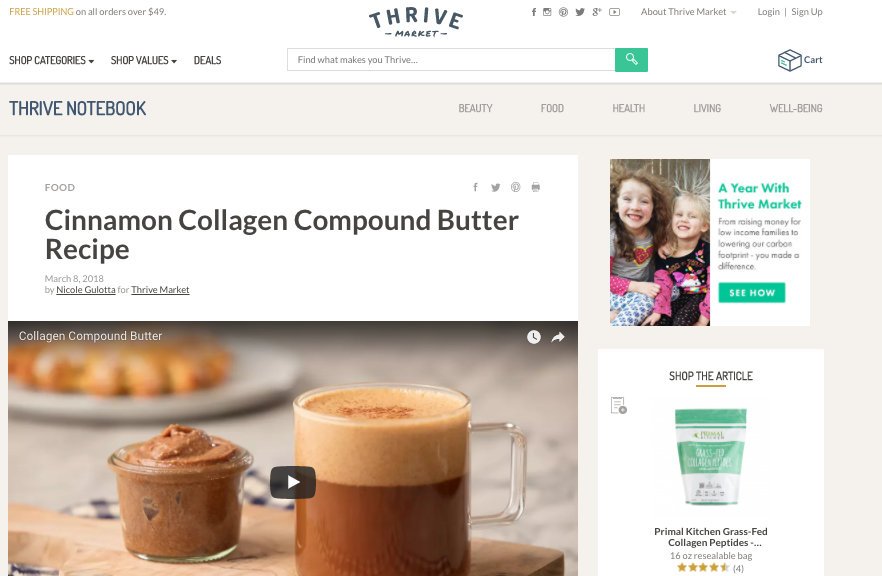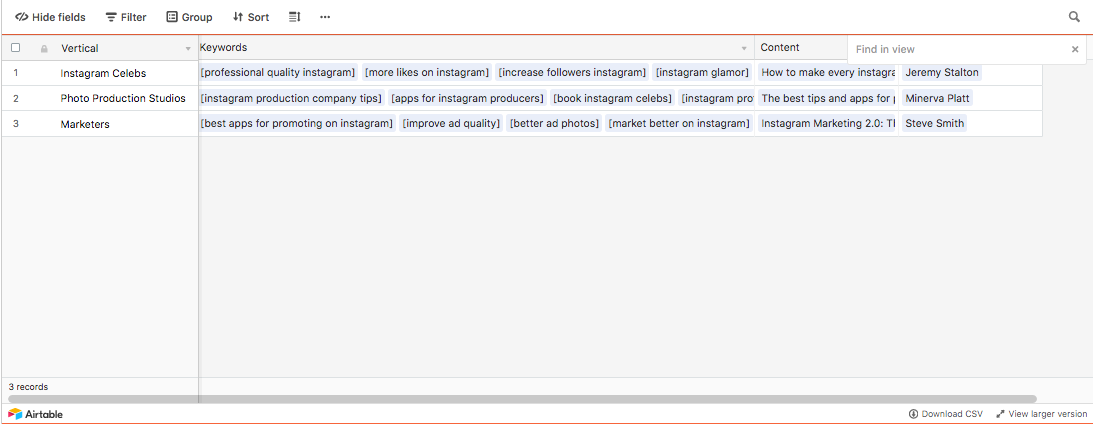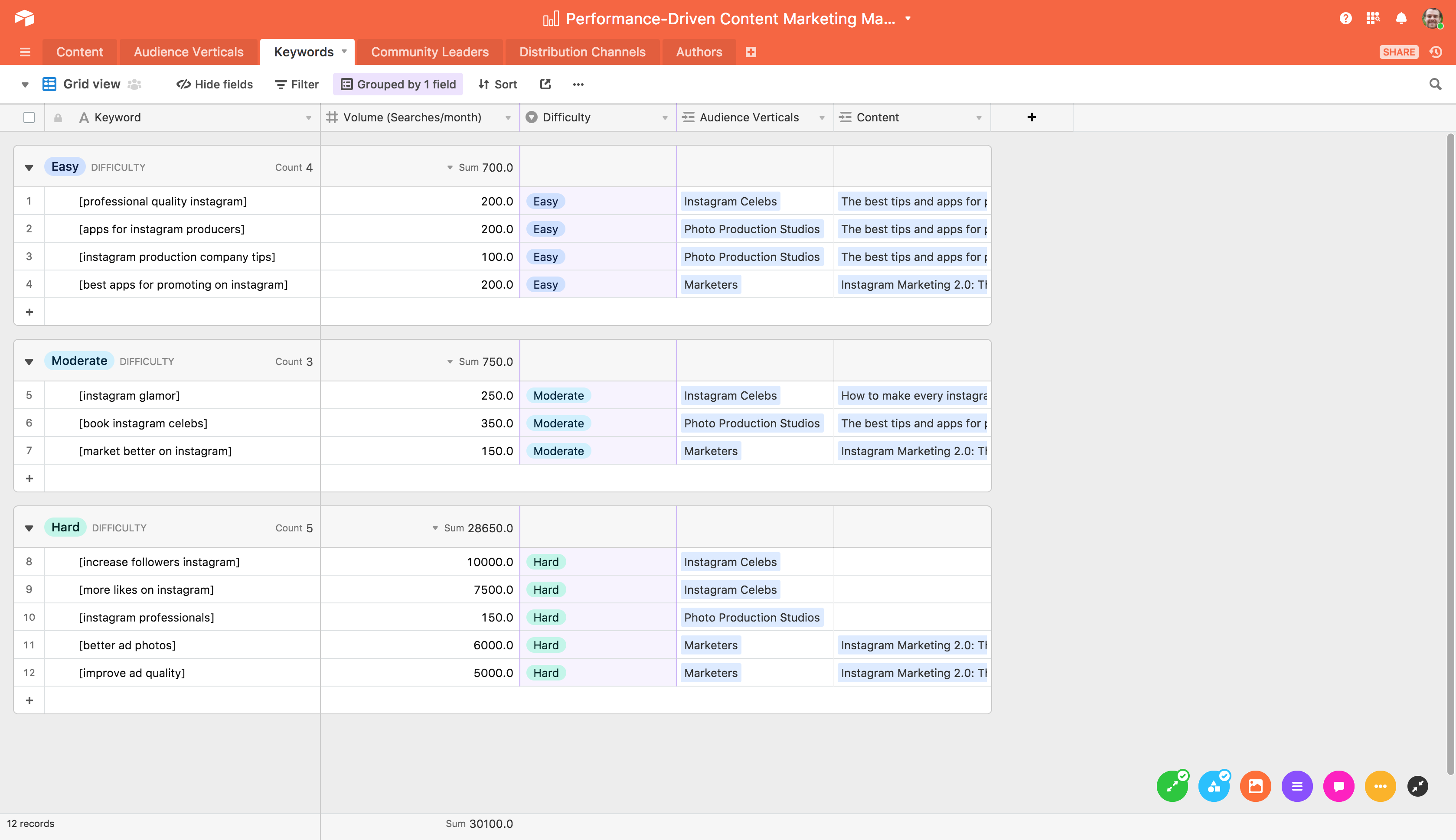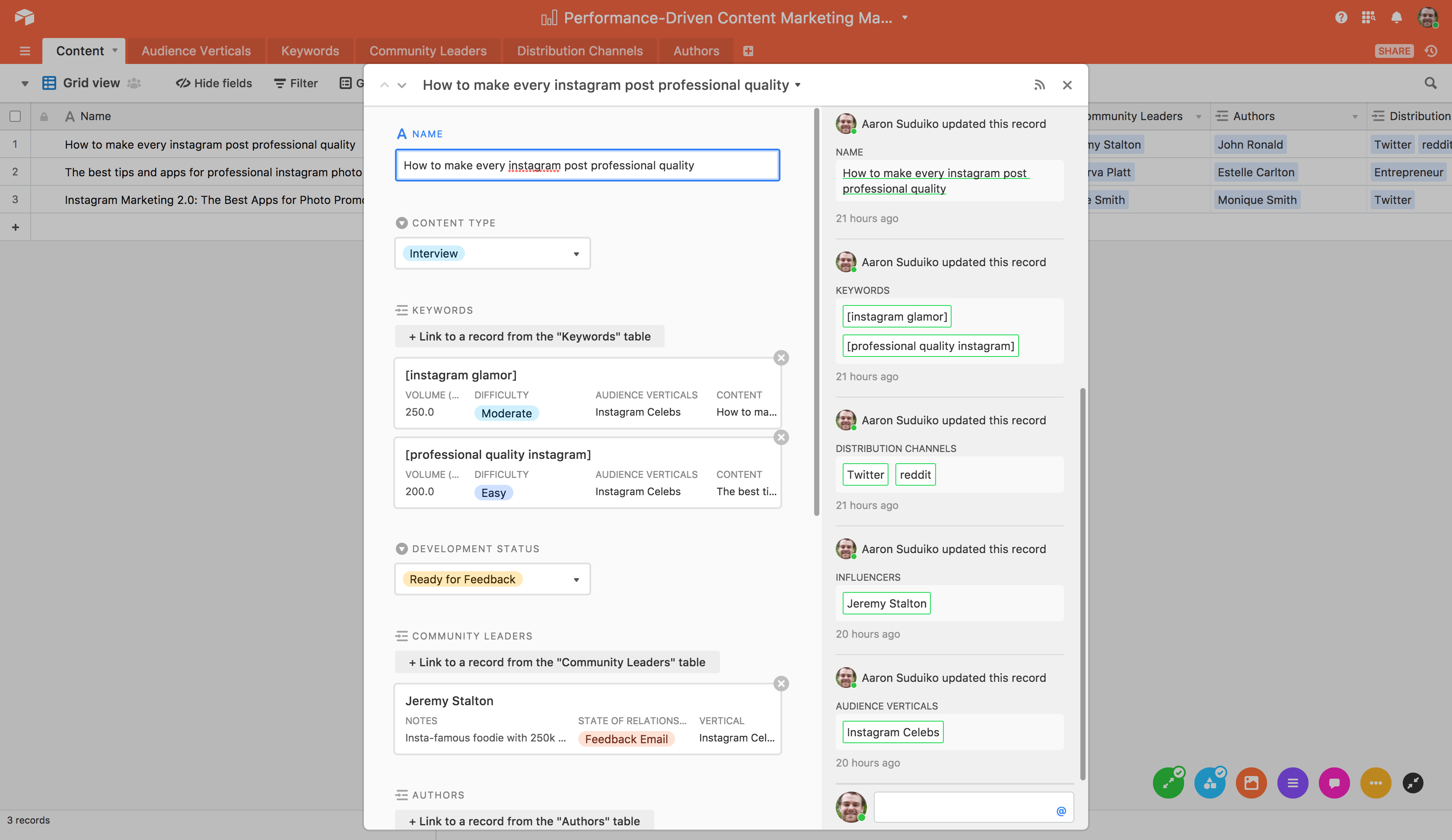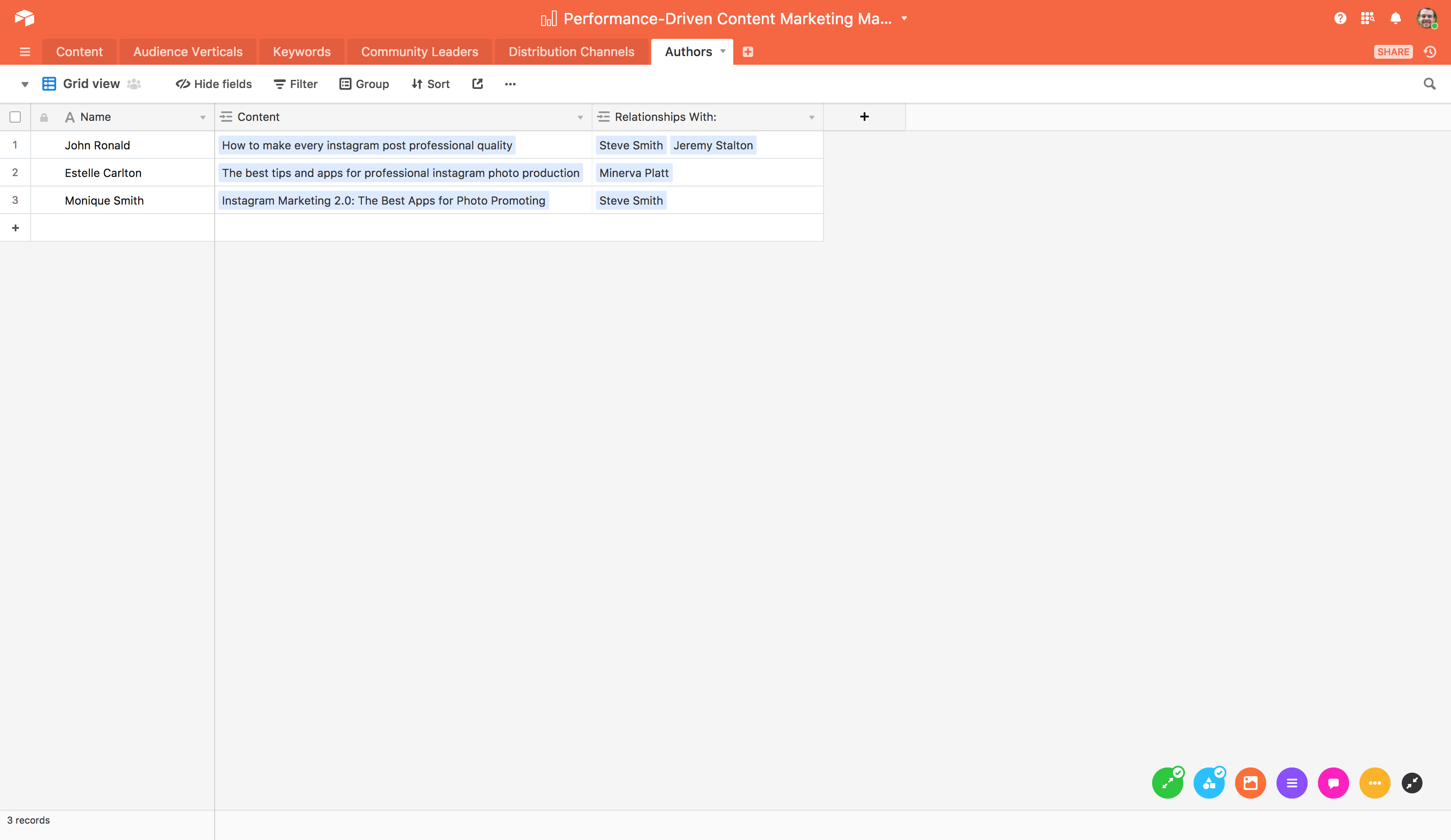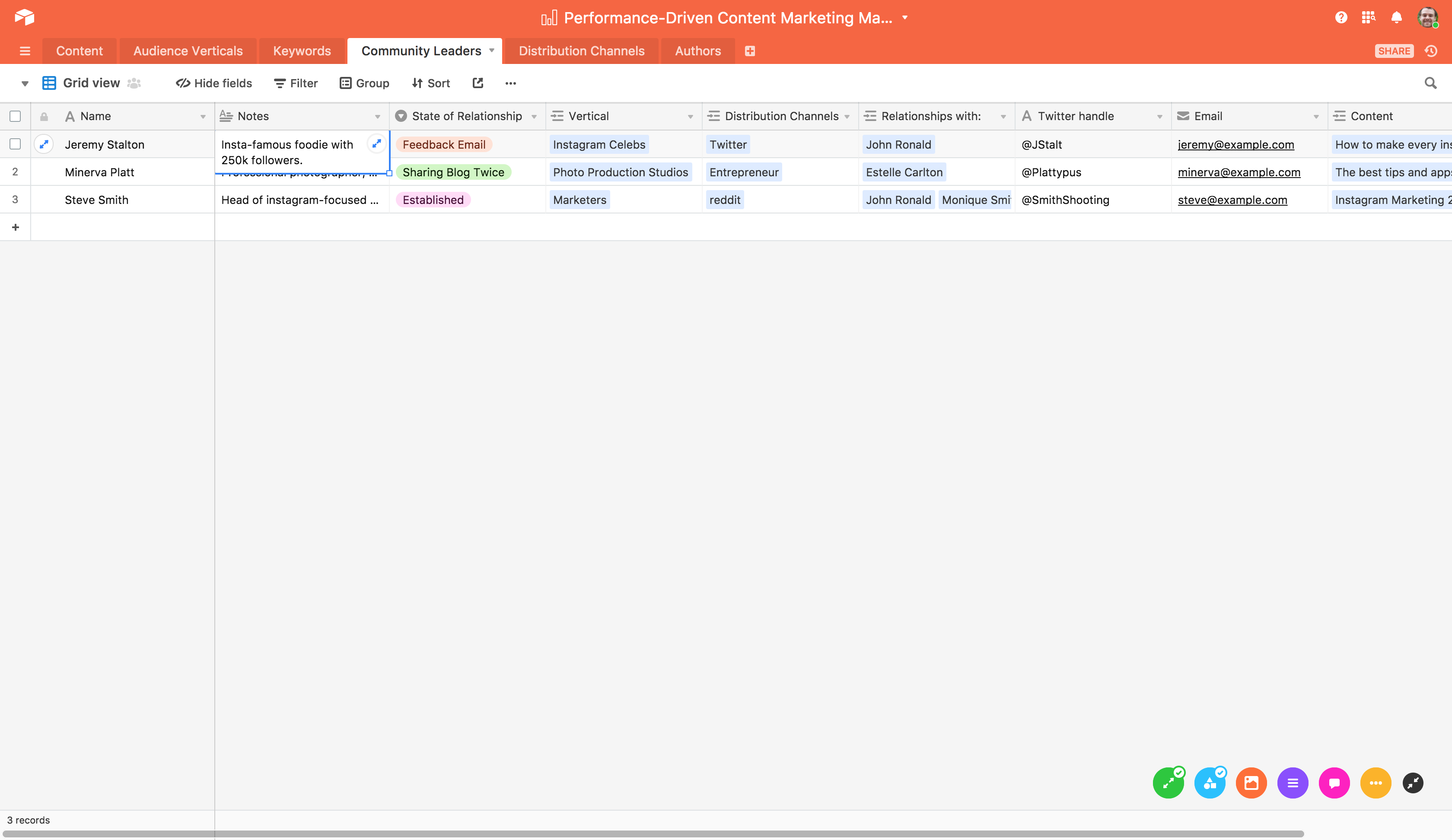This is a guest post from the team at Airtable. Read more on the Airtable blog!
Ecommerce content marketing often feels more artistic than results-driven. From blog posts to videos, this content is created to showcase a brand’s aesthetic and the lifestyle around a product. By presenting an amplified brand image, the content is meant to get customers excited about products and drive them to make purchases.
The online grocery seller Thrive Market’s blog features a gorgeous recipe video to drive viewers to their product ingredient pages.
But to actually drive greater sales, ecommerce content marketing can’t be just about feelings. It doesn’t matter how well your content sells your brand image—if it’s not created with a clear plan for greater conversions in mind, there’s no guarantee that it will lead to more orders.
To create successful ecommerce content, you need to bake results-driven thinking into every stage of your content pipeline. You’ll get better results for your company if you consciously write every article with a focus on whom you’re writing it for, where you’ll post the content to reach them, and how you’ll share it with them.
In this article, we show you exactly how to do that.
A 3-step framework for ecommerce content marketing
Creating high-quality ecommerce content isn’t just intuitive—you have to make sure you understand who your audience is and how you will reach them if you want your content to actually drive greater sales.
The key to this performance-driven content is setting up processes to guide your creation. It’s one thing to know that a deep understanding of your target audience matters—it’s another to design a content creation workflow that molds your work into something that will truly help target customers and drive them to share the content with others.
Back when he was starting KISSmetrics in 2008, Hiten Shah created a straightforward, three-step framework for this exact purpose. According to Shah, you need to ask three questions:
1. How do you identify your target audience?
2. Where can you find them?
3. How do you engage them?
By determining whom you’re writing for before you even start writing, you give yourself a well-defined roadmap for the content you need to create.
By locating the places where your customers and leads can be found, you know where to engage your audiences with content instead of just shouting words into the wind.
And by knowing the best way to actually reach out to your audience, you can build a strong following of target customers around your content.
Let’s dig into the best ways to execute each step of this framework, and how you can orchestrate it all in a single Airtable base.
1. Identify your audience
For ecommerce content, nailing down your audience at a basic level is simple—it’s your target customers.
But the more precisely you’re able to define who this audience is, the easier it’ll be to write effective content: you’ll be giving yourself a roadmap for the kind of content you need to write every day, since you know exactly what types of customers and leads you’re trying to help.
You can drill down into your target audience and set yourself up to maximize your work’s performance by splitting up your target customers into three to four verticals that are likely to find the most value in your content. Doing this will allow you to stay laser-focused on whom you’re talking to, which can guide everything from the topics you discuss to the language that you use when discussing it.
For instance, say you’re an ecommerce merchant selling photography equipment. If you’re writing an article about how a high-end photo-editing tool can improve Instagram pictures, you might pick verticals like:
- Instagram celebrities
- Photo production studios
- Marketers
From here, you can drill down further by brainstorming particular keywords for each vertical to drive SEO. To help you determine which terms you should include in your content to make it easily discoverable, here are a few keyword brainstorms from the vertical examples above.
- For the Instagram celebrities vertical, you might brainstorm keywords like: “instagram glamor,” “increase followers instagram,” “more likes on instagram,” and “professional quality insta.”
- For the photo production studios vertical, you might brainstorm keywords like: “instagram professionals,” “book instagram celebs,” “apps for instagram producers,” and “instagram production company tips.”
- For the marketers vertical, you might brainstorm keywords like: “market better on instagram,” “better ad photos,” “improve ad quality,” and “best apps for promoting on instagram.”
The ideal keywords will have high volume and low difficulty: that is, there’s a high volume of searches for those keywords, but it’s relatively easy to rank near the top of the search results for those keywords. You can use a tool like keywordtool.io to get data on search volume for your chosen keywords, which will help you to find the most valuable keywords to optimize for.
In our Airtable base, you can use the Audience Verticals table to log the verticals you’re targeting; then, enter data on your targeted keywords in the Keywords table. By linking these tables, you can easily track which keywords you want to rank for in each vertical, and which keywords will be the easiest for you to get the most traffic with.
The Audience Verticals table stores information on the different verticals you’re targeting so you can understand whom you’re writing each piece of content for.
The Keywords table is linked to the Audience Verticals table. Try grouping the Keywords records by the Audience Verticals field to quickly see which keywords you’re going after for each vertical…
…or by the Difficulty field, to see which keywords will probably be easiest to rank for.
When you’ve nailed down your audience and the keywords to reach them, you’ll be in a much stronger position to consistently produce content that speaks to customers and leads in a sustained and insightful way. Your audience will guide your article ideas, and you won’t have to reinvent the wheel with every new article proposal.
2. Identify where to find your audience
So now you have a roadmap for the content you need to produce for your audience. The next step is to figure out where to distribute the content. Where are your target customers hanging out online?
People won’t just show up on your blog out of thin air—you need to understand where your target customers are so you can distribute your content there to gain traffic.
Facebook and Instagram are two of the most powerful ways to share ecommerce content. The visual nature of both lends itself well to the brand- and lifestyle-focused content of ecommerce.
As a part of their content marketing strategy, the clothing store Madewell posted a video of their workers wearing their outfits on Instagram.
Other social sites to consider sharing your content on include:
- Industry-specific forums
If you don’t already have a good sense of where your audience hangs out, a simple Google search can do wonders. In our previous example, you might search for “instagram fashion forums.” Or, you could dive into a particular community—maybe a fashion subreddit—and unearth more communities by seeing what other sites users are commonly linking to.
In our example Airtable base, all the places where you want to publish content live in the Distribution Channels table.
You can group your distribution channels by priority in order to develop a strategy based on which channels you most want to penetrate.
With your audience, SEO, and distribution strategy in place, you can draft up article ideas in the Content table and assign authors to them through the linked Authors table.
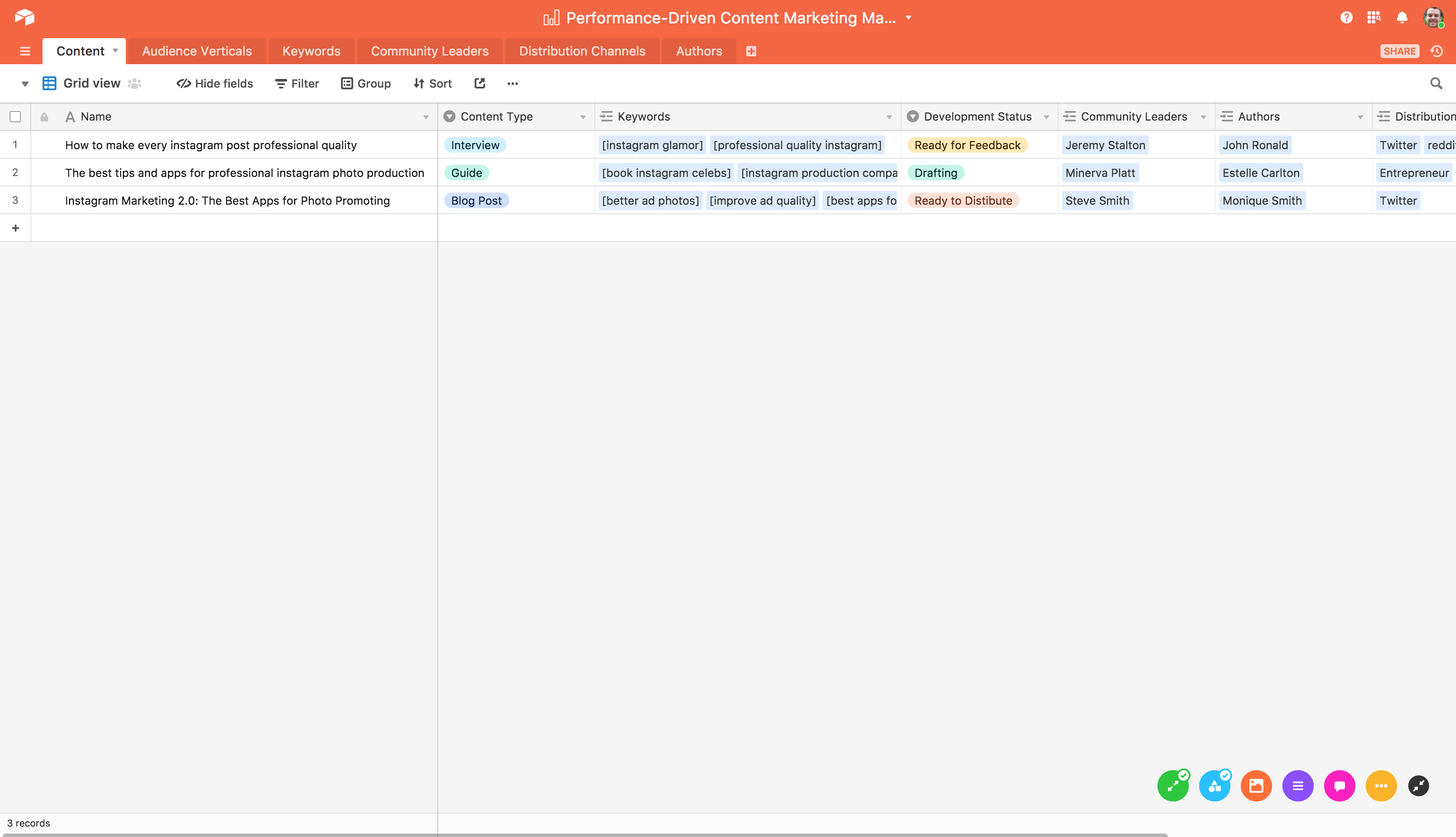
Expanding any particular record in the Content table gives you a granular view of every aspect of that article.
The Authors table lets you track not only who’s producing what content, but also who has been developing relationships with which community leaders.
Once you have your content organized with your distribution channels set, you know exactly where to reach your target customers with valuable content.
3. Identify leaders to help you engage your audience
With ecommerce content distribution, it’s not just about where you share your content—it’s also about who is sharing your content. There are so many brand and lifestyle social media influencers who can highlight your ecommerce content and bring traffic to your product pages.
For this to happen, you can’t just ask influencers to share your content—you first have to develop a meaningful relationship with them. With that groundwork established, you can leverage those relationships to get your content circulated by influencers whom your target customers respect.
Alex Turnbull, the CEO and founder of Groove, has a simple checklist for ensuring genuine connections with community leaders. He discusses his strategy particularly in reference to Twitter leaders.
- Start by following them (e.g., on Twitter)
- Tweet at them twice
- Comment twice on their blog content
- Share their blog content twice
- Send them a personal email asking if they would be interested in a link to your content
- Send them a link asking only for feedback
- When the post is published, send it to them and ask them to share it
These leaders often have established, vertical-specific communities that trust them. This means that they won’t share just anything, but if you can build a rapport with them, they can boost your content to your exact target audience.
And that kind of rapport comes from contributing to conversations these leaders care about in meaningful ways. Don’t just comment “Great article!” at the bottom of a leader’s article and move on to the next step—make the effort to leave a comment that sincerely continues the conversation that the leader is trying to start with their article.
When it’s time to start cultivating and leveraging relationships with community leaders, head to the Community Leaders table in your Airtable base to track which people you’re pursuing as leaders in each of your verticals.
The Community Leaders table lets you track how far along your relationship is with each leader. You can also keep bios for quick reference and log which distribution channels a leader is most active on.
Fostering relationships with community leaders is a great way to start conversations around your content and generate new ideas that can help everyone in your audience—and that can serve as the seed for future content creation!
Turn your content marketing workflow into a results-driven strategy
With the right framework in place, you’ll no longer be shooting in the dark with each piece of ecommerce content. Instead of creating content that merely evokes your brand aesthetic, your strategy will be guided by driving results with content that brings value to target customers, fosters meaningful relationships and converts the audience into customers.
To read more about building a content marketing workflow that’s specific to your business, check out Airtable’s comprehensive content marketing eBook.

